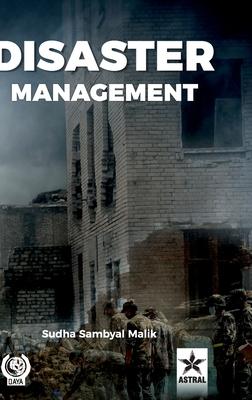Disaster Management can be defined as the organization and management of resources and responsibilities for dealing with all humanitarian aspects of emergencies, in particular preparedness, response and recovery in order to lessen the impact of disasters. Disaster Management as a subject essentially deals with management of resources and information as far as a disastrous event is concerned and also how effectively and seamlessly one coordinates these resources. Disaster management, at the individual and organisational level, deals with issues of planning, coordinating, communication and risk management. A book to teach disaster management would accomplish very little unless a broad spectrum of knowledge is imparted regarding effects of various types of disasters, their dimensions and characteristics, the role of United Nations in complex emergencies and the role of Indian government in prevention and control of disasters. Equally important is the knowledge about various international and national agencies involved in disaster relief and humanitarian assistance. This book covers all these subjects in order to enhance the ability of students and professionals for better disaster response. An effort has been made to cover the subject according to the syllabus of couple of Indian Universities. The book contains all the topics included in the post graduate classes. The content of the book has been concentrated on familiarizing the student with basics of various disasters along with their management. The students who would be using this book come from exceedingly diverse backgrounds: some from medical background, This book will be the first contact with Disaster management and for many it would be a familiar book. Therefore, it has been tried to explain each and every topic in very simple and easy manner. Disaster impact is often expressed in terms of the numbers of dead, injured, loss of property and resources. Therefore, the purpose of this book will be served if in the end it helps to minimize the economic losses and reduce injuries and death to the affected population.
| FindBook |
有 1 項符合
Disaster Management的圖書 |
 |
Disaster Management 作者:Malik 出版社:Astral International Pvt. Ltd. 出版日期:2022-01-01 語言:英文 規格:精裝 / 112頁 / 23.39 x 15.6 x 1.12 cm / 普通級/ 初版 |
| 圖書館借閱 |
| 國家圖書館 | 全國圖書書目資訊網 | 國立公共資訊圖書館 | 電子書服務平台 | MetaCat 跨館整合查詢 |
| 臺北市立圖書館 | 新北市立圖書館 | 基隆市公共圖書館 | 桃園市立圖書館 | 新竹縣公共圖書館 |
| 苗栗縣立圖書館 | 臺中市立圖書館 | 彰化縣公共圖書館 | 南投縣文化局 | 雲林縣公共圖書館 |
| 嘉義縣圖書館 | 臺南市立圖書館 | 高雄市立圖書館 | 屏東縣公共圖書館 | 宜蘭縣公共圖書館 |
| 花蓮縣文化局 | 臺東縣文化處 |
|
|
圖書介紹 - 資料來源:博客來 評分:
圖書名稱:Disaster Management
|











